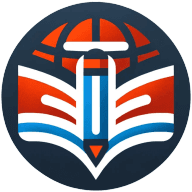6 Promoting Student Agency and Ownership in Learning: Effective Strategies
Discover effective strategies for promoting student agency and ownership in learning, with valuable insights from education experts. This article explores how allowing students to design their own projects can transform their educational experience. Practical approaches and proven techniques help educators create environments where students take control of their learning journey.
Let Students Design Their Own Projects
In our home education world, student agency isn't something we tack on; it's the foundation. Kids learn best when they feel like co-authors of their own education rather than passengers on a bus they didn't choose. One strategy that's worked beautifully is letting them design their own projects within broad themes. If we're exploring ecosystems, one might build a mini terrarium, another might write a story about life in a swamp, and another might film a nature vlog. They learn the same concepts, but through their own lenses, which makes the learning stick in a way worksheets never could.
The key is trust. I've learned to stop rescuing them too early or dictating the "right" way to do things. When students own their work, they also own their mistakes; and that's where real learning hides. Agency isn't about total freedom; it's about real responsibility paired with support. Give kids space to steer, and you'll be amazed at how confidently they start navigating.

Create Democratic Systems for Classroom Decisions
Democratic classroom systems that involve students in establishing rules, procedures, and learning priorities create a culture of shared responsibility and respect. When students participate in class meetings to discuss issues and make collective decisions, they learn valuable civic skills while developing a sense of belonging and investment in their learning environment. These participatory approaches teach students that their voices matter and that with rights come responsibilities to the larger group.
Regular opportunities for student input on curriculum choices, classroom management, and conflict resolution help develop leadership abilities and emotional intelligence. Even young learners benefit from appropriate levels of democratic participation that grow more substantial as students mature throughout their educational journey. Consider implementing regular class meetings where students can propose ideas and vote on classroom decisions to foster genuine ownership of the learning community.
Develop Growth Mindset Through Interactive Feedback
Effective feedback mechanisms focused on growth mindset principles help students view challenges as opportunities rather than threats to their abilities. When feedback emphasizes effort, strategy, and improvement over fixed judgments, students develop resilience and a positive approach to learning difficulties. Teachers can design feedback systems that require students to respond to comments, set new goals, and track their progress over time rather than simply receiving grades.
This ongoing dialogue about learning helps students internalize the idea that intelligence and ability can be developed through dedication and hard work. Growth-oriented feedback supports students in taking healthy risks in their learning without fear of failure or judgment. Transform your assessment approach by implementing feedback systems that require students to reflect on and respond to comments before moving forward with new work.
Offer Structured Choices Through Assignment Menus
Providing students with clear choices within structured learning frameworks helps them develop decision-making skills while ensuring educational goals are met. Teachers can create assignment menus that allow students to select how they demonstrate their understanding of concepts through different project options. These scaffolded choices give students agency while maintaining necessary learning objectives and academic standards.
The balance between freedom and structure creates a safe environment for students to explore their interests and take ownership of their educational journey. Students gain confidence in their ability to make good decisions when given appropriate guidance and options that match their skill level. Start implementing choice boards or project menus in your classroom to give students meaningful options within your curriculum requirements.
Implement Student-Led Conferences and Self-Assessments
Student-led conferences and self-assessments shift the responsibility of tracking progress directly to learners, making them active participants rather than passive recipients. When students regularly evaluate their own work against clear criteria, they develop critical thinking skills and become more aware of their learning needs. These practices encourage students to reflect on their strengths and identify specific areas for improvement instead of simply working for grades or teacher approval.
The process of preparing to present their progress to parents or teachers helps students articulate their learning journey and take pride in their accomplishments. Self-assessment tools like rubrics, learning journals, and portfolio reviews provide structure for students to honestly evaluate their development. Begin incorporating regular self-assessment opportunities into your classroom routine to empower students with greater ownership of their educational progress.
Connect Learning to Real-World Problem Solving
Authentic problem-solving opportunities connect classroom learning to real-world situations, helping students understand the relevance and application of their education. When educators design projects based on community needs or current events, students become invested in finding solutions that matter beyond earning grades. These meaningful challenges encourage learners to apply knowledge across subject areas while developing crucial skills like research, collaboration, and creative thinking.
The satisfaction of addressing actual problems builds intrinsic motivation that textbook exercises alone cannot generate. Students who see their work making a difference develop stronger identities as capable learners and valuable contributors to society. Reach out to local organizations to identify genuine problems your students could help solve through classroom projects and watch their engagement soar.

